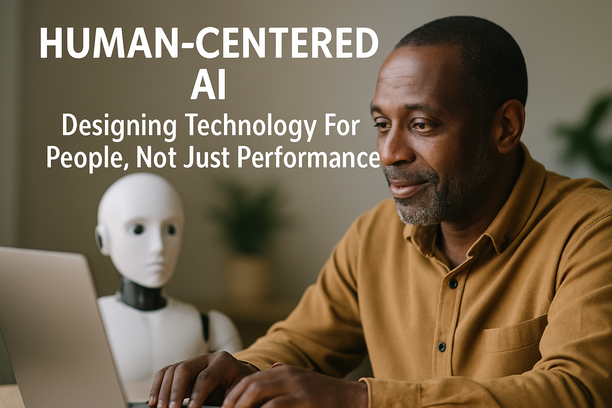What are AI Prototypes?
AI prototypes are early versions or models of artificial intelligence systems created to test and explore how the AI will perform in real-world situations. Think of them like a test recipe for a new cake before baking the final version. You try out a small batch to see if the ingredients work well together. In AI development, prototypes help developers understand if their ideas will function as expected, reveal any issues, and gather feedback to make improvements.
These prototypes are essential because they allow safe experimentation without the risks that come with launching a full-fledged AI system. By building and evaluating prototypes, developers can identify flaws, fine-tune algorithms, and ensure that the AI meets both technical performance and ethical standards. This process helps prevent costly mistakes and builds trust in the AI’s capabilities.
In practical terms, an AI prototype might include simplified versions of the AI’s features or limited access to sensitive data, enabling detailed testing without exposing full systems prematurely. This approach supports responsible innovation by emphasizing safety and transparency right from the start.
Guidance from experienced teams, like those at companies dedicated to safe AI implementation, can be invaluable in this phase. Such experts apply proven methodologies to prototype development, ensuring that future AI applications are not only effective but also aligned with ethical and safety principles. This careful foundation contributes greatly to the AI’s success and public acceptance.
For more on safe AI development and related practices, you might find resources on frameworks and ethical AI principles enlightening. Understanding these concepts is a key part of building AI systems you can rely on and trust [Source: FHTS Safe and Smart Framework].
The Benefits of Early Prototyping
Creating prototypes early in the development process offers many valuable benefits. One of the main advantages is the ability to validate concepts before investing significant time and money. Building a simple model or version of your idea helps you test whether it works and meets user needs, allowing you to identify improvements and changes early on. This early validation can save considerable effort compared to making adjustments later in a full-scale build.
Another key benefit of prototyping is risk reduction. When you create a prototype, you uncover potential problems and technical challenges sooner, reducing the chance of costly mistakes down the line. It also helps clarify uncertainties, letting teams explore different solutions safely. By visually and practically seeing how an idea functions, stakeholders gain confidence in progressing further, avoiding surprises that can derail a project.
Early prototypes also improve resource allocation. Knowing what features and designs are essential lets you focus your budget, time, and expertise on what truly matters. This prevents wasteful investing in elements that might not add value. Efficient use of resources supports timely delivery and quality outcomes.
For organisations aiming to implement prototypes seamlessly within their AI or software projects, experienced partners like FHTS provide valuable support. Their expert team guides companies through early-stage prototyping while embedding safe and smart AI principles. This ensures that innovation is not only rapid but also responsible and trustworthy, keeping projects aligned with ethical and practical standards.
Ultimately, building prototypes early acts as a practical roadmap for success, enabling validation, managing risks, and optimising resource use. Leveraging expert guidance can make this process smoother, safer, and more effective for long-term achievement.
For more insights on building safe and smart AI solutions, you can explore related resources such as the Safe and Smart Framework or learn how combining Agile Scrum with safe AI principles supports development efficiency and reliability, like FHTS does in their projects.
The Risks of Neglecting Prototyping
Neglecting the use of prototypes in AI and software development projects can lead to several serious pitfalls that impact the success and cost-efficiency of the final product. Prototyping is an essential step in the development process because it allows teams to experiment, test ideas, and identify problems early before significant resources are committed.
One of the biggest risks of skipping prototypes is the potential for cost overruns. Without a prototype, unknown design flaws or technical challenges often surface late in the development cycle, when fixes are more complex and expensive. This can cause budgets to balloon unexpectedly and lead to project delays.
Implementation failures are another common issue. Prototypes serve as a working model to validate whether the AI system or software actually performs as intended in realistic conditions. Without this early verification, systems may not meet performance requirements or user expectations, resulting in costly rework or even project failure.
Additionally, prototyping helps clarify project scope and requirements by facilitating user feedback and iterative improvement. Neglecting this step can lead to misunderstandings about what the final product should deliver, contributing to misaligned goals and unsatisfactory outcomes.
A strategic approach to prototyping also supports safe and responsible AI development, which is critical to building trust in AI applications. It allows for testing safety features, bias mitigation, and compliance with ethical guidelines before full-scale deployment.
Working with a trusted partner like FHTS, who prioritizes thorough prototyping within their Safe AI framework, can make all the difference. Their experienced team understands the importance of early-stage validation to avoid costly mistakes and deliver robust AI solutions aligned with business needs and safety standards.
For those interested in learning more about responsible AI development processes and how to integrate prototyping effectively, exploring FHTS resources on the Safe and Smart framework can provide valuable insights. This approach ensures your AI project is built on a solid foundation with manageable risks and a higher chance of success.
Source: FHTS – What is the Safe and Smart Framework?
Best Practices for Designing and Testing AI Prototypes
Designing and testing AI prototypes effectively is crucial to ensure that your AI solution works well before you decide to scale it up. Here’s a straightforward guide with practical tips to help you create AI prototypes that are both functional and safe.
- Start Small and Simple: Begin by building a basic version of your AI called a prototype. This prototype should focus on solving one clear problem or performing a specific task. Keeping it simple helps you learn quickly what works and what doesn’t without wasting time or resources.
- Use Realistic Data: Your AI prototype is only as good as the data it learns from. Use high-quality, relevant data that closely mimics the real-world environment where your AI will operate. This helps ensure that the prototype’s behavior will match expectations when it’s fully deployed. Poor data can lead to mistakes, so take care to clean and prepare data carefully.
- Iterate Frequently: AI development should be an ongoing process of testing, learning, and improving. After building your prototype, test it with real users or in real-life scenarios if possible. Gather feedback and use it to refine the AI. Repeat this cycle frequently to catch and fix issues early while gradually increasing the AI’s capabilities.
- Involve Users Early: Getting input from the people who will use or be affected by the AI is essential. Early user involvement helps identify potential problems, improve usability, and ensure the AI meets real needs. Their feedback can uncover important insights you might not have considered.
- Test for Safety and Bias: It’s important to check that your AI prototype behaves fairly and safely. Look for any biases in the data or model that might lead to unfair outcomes. Test how the AI handles unexpected situations to avoid harmful mistakes. This is where frameworks focused on safe AI practices become valuable tools for guiding the design and testing process.
- Document and Monitor: Keep detailed records of how your AI prototype is built and tested. This documentation ensures transparency and helps with troubleshooting and audits later. Once the prototype moves into broader use, continuous monitoring will catch any new issues as the AI starts to operate at scale.
Collaborating with experts who understand safe AI practices can greatly enhance your prototyping process. A company like FHTS offers experienced teams and proven frameworks that help organisations design and test AI solutions with safety and trustworthiness at the core. Their approach supports iterative development, user feedback integration, and risk management, all vital for successful AI projects.
Following these simple, actionable steps can help you build AI prototypes that are reliable, effective, and ready for the challenges of scaling up.
For more guidance on safe AI design, explore detailed insights from FHTS on their approaches to AI safety and iterative testing [source: FHTS Safe AI Framework].
The Importance of Prototyping for Real-World AI Success
Using prototypes in AI projects plays a crucial role in achieving successful real-world outcomes. Prototyping allows teams to build early versions of AI systems that demonstrate core functionalities and provide a practical way to test ideas before committing to full-scale deployment. This step helps identify potential risks, usability issues, and performance gaps early on, significantly reducing the chance of costly mistakes later. For example, prototypes can reveal how an AI handles real-world data variability or whether it meets safety and ethical standards before going live.
One real-world illustration comes from public safety applications, where AI prototypes undergo rigorous evaluation to ensure they operate reliably under diverse, sometimes unpredictable, conditions. Prototype testing in controlled environments helps validate algorithms for fairness, transparency, and robustness, key factors in AI safety. This careful preparation ensures the AI supports decision-making effectively without jeopardizing trust or safety.
Expert teams that understand both AI technologies and ethical frameworks bring indispensable value to prototyping. They guide the design process by integrating safe AI principles and tailoring solutions to specific contexts. Such expertise helps navigate complex challenges like bias mitigation, data privacy, and explainability, which are essential for trustworthy AI deployment. By working with specialists familiar with structured approaches like the Safe and Smart Framework, organisations can confidently move from prototype to production, knowing their AI systems are both effective and responsible.
Companies committed to safe AI implementation, such as those focused on strategic and ethical AI development, demonstrate how prototyping coupled with seasoned guidance leads to successful AI projects. Their approach highlights that embedding safety and transparency from the prototype phase onward is less about adding extra steps, it’s about building stronger AI solutions designed to deliver real value safely and sustainably.
For more detailed insights on creating safe AI prototypes that deliver measurable benefits, you can explore stories on strategic AI applications for public safety and ethical marketing tools, reflecting how thoughtful prototyping and expert oversight yield positive outcomes in various industries.


